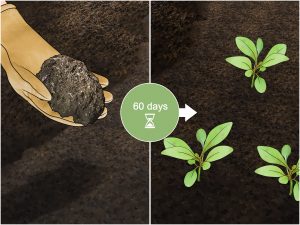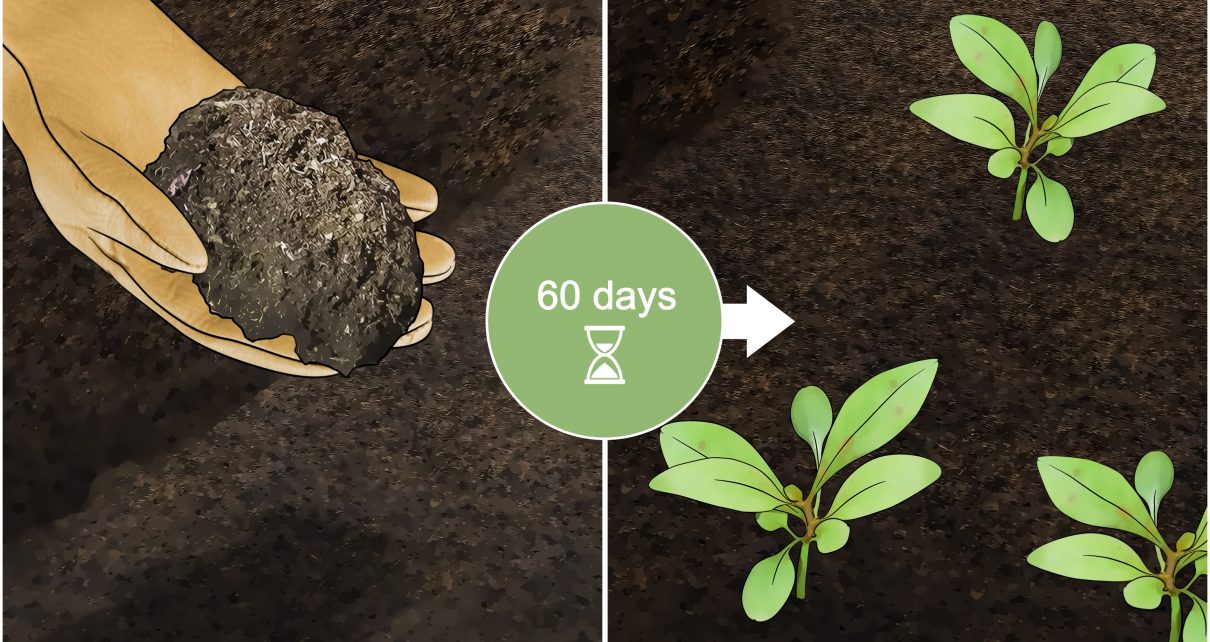The nitrogen content of soils ranges from 0.02% in natural soils to 0.15% in cultivated soils. Additonally, precipitation of ammonia gas and nitrates in rainwater, dust, and snow can add nitrogen to the soil. The nitrates in the atmosphere are the result of lightning and exhaust from automobiles, trucks, and buses. The largest additions are seen in humid tropical regions and near cities, industrial parks, and animal feedlots.
Nitrogen in soils occurs in several forms including as organic compounds, ammonium ion, nitrite, nitrate, nitrous oxide, and nitrogen gas. The largest concentration of nitrogen in surface soils is in the organic form. Typically, the soil organic matter contains about 5% nitrogen. Additionally, a large part of the nitrogen in the lithosphere is in a fixed form within the earth’s crust in rocks and sediments which is generally unavailable for plant uptake. The main forms that nitrogen is taken up by plants is as either ammonium or nitrate. Nitrogen which is available to plants may come from decomposition of organic matter, biological fixation of nitrogen, and from additions of nitrogen in organic or inorganic fertilizers. living microorganism to amino acids. The organism all use a specific enzyme called nitrogenase to enable this reaction to go. Because of the high energy requirement to enable this reaction to occur, association with higher plants is an advantage because of the energy produced by photosynthesis. Additionally free oxygen will destroy the enzyme so in the nodules leghemoglobin is produced which binds the oxygen preventing in from coming into contact with the nitrogenase enzyme. The amount fixed is dependent upon contents decrease nitrogen fixation.
Biological nitrogen fixation is the process by which atmospheric nitrogen is converted by symbiotic and freeliving microorganism to amino acids. The organism all use a specific enzyme called nitrogenase to enablethis reaction to go. Because of the high energy requirement to enable this reaction to occur, associationwith higher plants is an advantage because of the energy produced by photosynthesis. Additionally freeoxygen will destroy the enzyme so in the nodules leghemoglobin is produced which binds the oxygenpreventing in from coming into contact with the nitrogenase enzyme. The amount fixed is dependent upon pH , adequate soil moisture content, and if Mo, Fe. P and K are available. Low pH and high oxygencontents decrease nitrogen fixation. The most important free living species N2 fixing bacteria belong to the genera Azobacter, Beijerinckia,
Spirallum, and Enterobacter. These bacteria will fix more nitrogen pastures ( 7 to 114 kgN/ha/yr ) , and forest ( 60 to 600 kgN/ha/yr ) than under arable land ( 7 to 28 kgN/ha/yr ).

Rhizobia species is the most common nitrogen fixers know to home gardeners. The rhizobium forms a symbiotic relationship with legumes such as clovers and peas. A good stand of legumes may produce between 100 to 400 KgN/ha/yr. The rhizobia is very plant specific so the appropiate species must be associated with the plant for nitrogen fixation to occur. This is the reason why these plants are incollulated with a specific form of rhizobia. Low pH has been found to reduce nitrogen fixation while calcium has been found to increase nodulation resulting in more nitrogen fixation. High levels of nitrogen in the forms of nitrates, nitrites, ammonium, and urea have been shown to decrease nitrogen fixation.
In paddy soils, the Cyanophyceae species ( Blue-green algae ) in association with the aquatic fern ( Azolla pinniata ) fixes nitrogen. The amount of nitrogen fixed ranges from 10 1o 100 kgN/ha/yr.
Additionally, lightning may oxide atmospheric nitrogen but the quantities are usually quite low. Ammonification is the process by which organic nitrogen is converted from an organic form to an inorganic form. Another name for this process is mineralization. Approximately 1.5 to 3.5% of the soil organic nitrogen is converted to inorganic nitrogen via this process per year. The first step is through a process called proteolysis which convert the nitrogen in the organic matter into an amino.
The amino is then converted thru ammonification by many soil microorganisms into the ammonium ion. Too much water or too little water and low temperatures reduce the rate this occurs.
The resulting ammonium ion may be adsorbed by the clay and organic matter fraction of the soil, taken up the plant or microorganism ( though for most plants the nitrate form is the one prefered ), be coverted to nitrate, or fixed by clay mineral such as vermiculites and become unavailable for plant uptake. The nitrogen immobilized by microorganism may later become available for plant uptake. The release of nitrogen from microorganism is depend upon the carbon to nitrogen ratio of the soil. A ratio above 15 to 1 will result in nitrogen becoming unavailable to plants while below 15 to 1 will result in more nitrogen becoming available to plants.
Thus, when straw or a pine mulch which has a high carbon to nitrogen ratio is added to a soil nitrogen will become less available while when plant material from legumes which has a low carbon to nitrogen ratio is added to a soil more nitrogen will become available. The ammonium ion if the pH of the soil is above 7.2 will be converted to ammonium gas which can be lost to the atmosphere. The smell from animal manures is caused by the lost of ammonia gas to the atmosphere.
Ammonium volatilization losses of ammonium based fertilizers is a common problem on alkaline soils. Urea when applied in the solid form may also be lost as ammonia gas on most regardless of the soil pH.. When urea hydrolyzes it produce a pH of 9 or above around the area it is located so even in an acid soil ammonia losses can be great. Other factors which influence the amount of ammonia volatilization losses include temperature, moisture, wind, and ammonium ion concentrations. The higher the temperature is the great will be the losses of ammonia to the atmosphere. Wind can help increase losses of this gas because it removes the ammonia gas from the soil surface allowing more ammonia to diffuse out of the soil. With urea, adequate moisture has to be available for hydrolysis to occur. Rainfall on the hand can reduce losses because it can leach the urea and ammonium ions deeper into the soil where they are more likely to be adsorbed by the soil. The higher the ammonium ion concentration if other conditions are right will result in higher ammonia gas losses.
The biological oxidation of ammonium ion is called nitrification. The first step is done by several autotrophic bacteria from the genera Nitrosomonas, Nitrosolobus, and Nitrosospita. This involves the conversion of ammonium ion to nitrite. The nitrite ion is mobile and may be lost thru leaching or taken up by the plant. But,since the second step of nitrification occurs so rapidly, this usually does not occur. The Nitrobacter species rapidly converts the nitrite to nitrate. The bacteria involved require oxygen so in waterlogged soils the nitrification process will not occur. Also, lack of water will inhibit the nitrification process. They also prefer a slightly acid to neutral soil to provide rapid rates of nitrification. Maximum nitrification rates occurs in the temperature range from 67 to 86 F.

The nitrate form of nitrogen is the form most plants take up. But, this form is very mobile and may be losted thru leaching. The rate of leaching and associated environmental problems is greater on sandy soils than clay soils. Irrigation and rainfall increase the amount of nitrogen lost by leaching. The amount of nitrate lost is depended on the quantity of nitrate available to be leached. Application of nitrogen fertilizer in excess can lead to significant nitrogen losses via leaching. This is especially true if nitrogen is added when plant growth is slow such as in the early spring or late fall.
Additionally, under waterlogged conditions and even under normal soil moisture conditions where pockets of water occur in the soil, the nitrate may be converted by anaerobic bacteria such as Pseudomonas to N2 or N20 and lost to the atmosphere. The amount of loss is higher when soil moisture content is high, organic matter levels are high, and with higher pHs and temperatures. Additionally, nitrates must be available for the denitrification process to occur.
Due to all the processes which effect nitrogen in soils, soil testing is generally not done because the results are meaningless in terms of plant uptake




